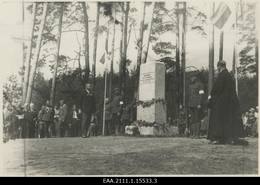How Reola was liberated
Description of the Battle of Reola in January 1919, considered a turning point in the War of Independence, during which Estonian troops thwarted the Red Army's attempt to capture Tartu.
A description of the Battle of Reola, one of the turning points in the War of Independence in January 1919, in which the Estonian forces thwarted the Red Army’s attempt to capture Tartu.
Reola Manor stands above its surroundings, its lands gradually descending towards Tartu. The manor was built from stone and enclosed with a high stone wall so that it resembled a fortress. Estonian soldiers edged their way through the open field of rye, which was partially covered in snow, towards the manor. The Bolsheviks had a dozen or more machine guns positioned in the manor’s attic and around the yard. They had copybook defensive positions, with the Estonian formations in full view. The Estonian assault on the manor was audacious, as the Bolsheviks could have taken them all down and the Estonians returning fire did nothing to those hiding behind the stone wall. It would have been much wiser to encircle the manor; it was surrounded by forests on two sides. But the commanders ordered that the attack be launched straight over the open field, with nowhere to take cover. They also lacked machine guns, being equipped with just one or two automatic rifles per unit. No wonder the Estonians lost a lot of men.
How Reola was liberated. Postimees. 16.01.1944. Digar. https://dea.digar.ee/article/postimeesew/1944/01/16/9
Related objects
Monument to the Battle of Reola
This monument is situated in the village of Tõõraste in Kastre municipality. Designed by Anton Sobolev, it commemorates the Battle of Reola, which was one of the turning points in the War of Independence. During the battle, which took place on 16 & 17 January 1919, the Estonian forces thwarted the Red Army’s attempt to capture Tartu. The monument was unveiled on 3 July 1932. After World War II it was knocked down and buried. On 27 November 1988, the monument, now dug up and restored by the Kambja Heritage Association, was unveiled anew.





